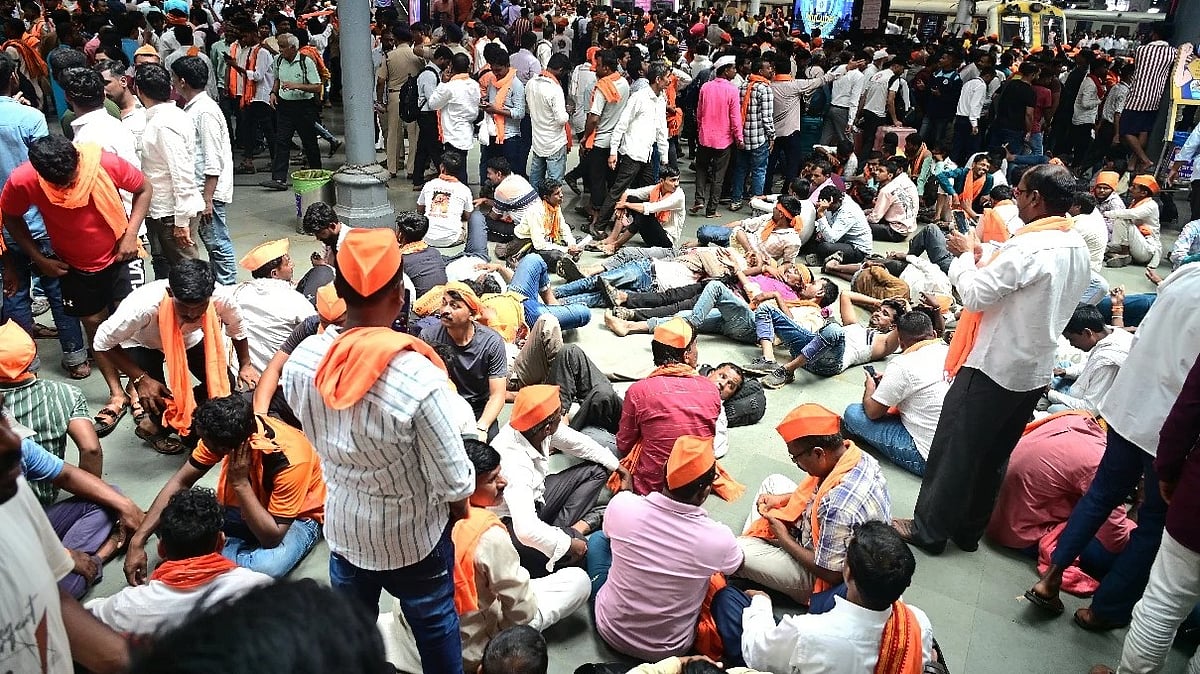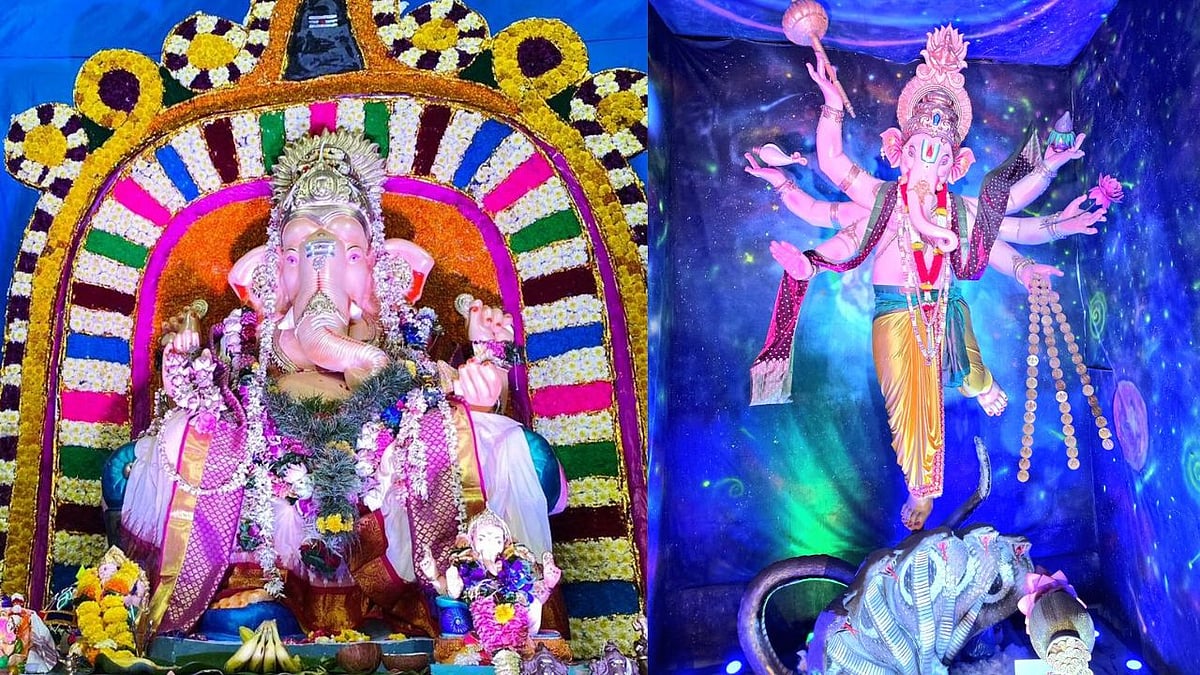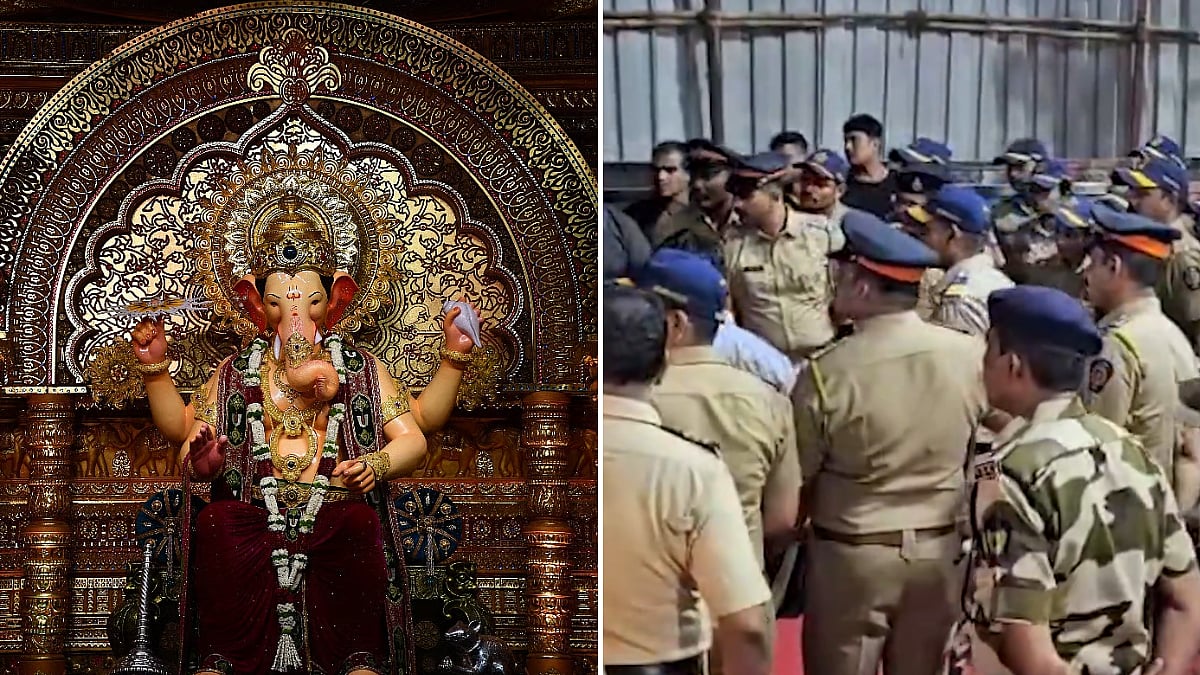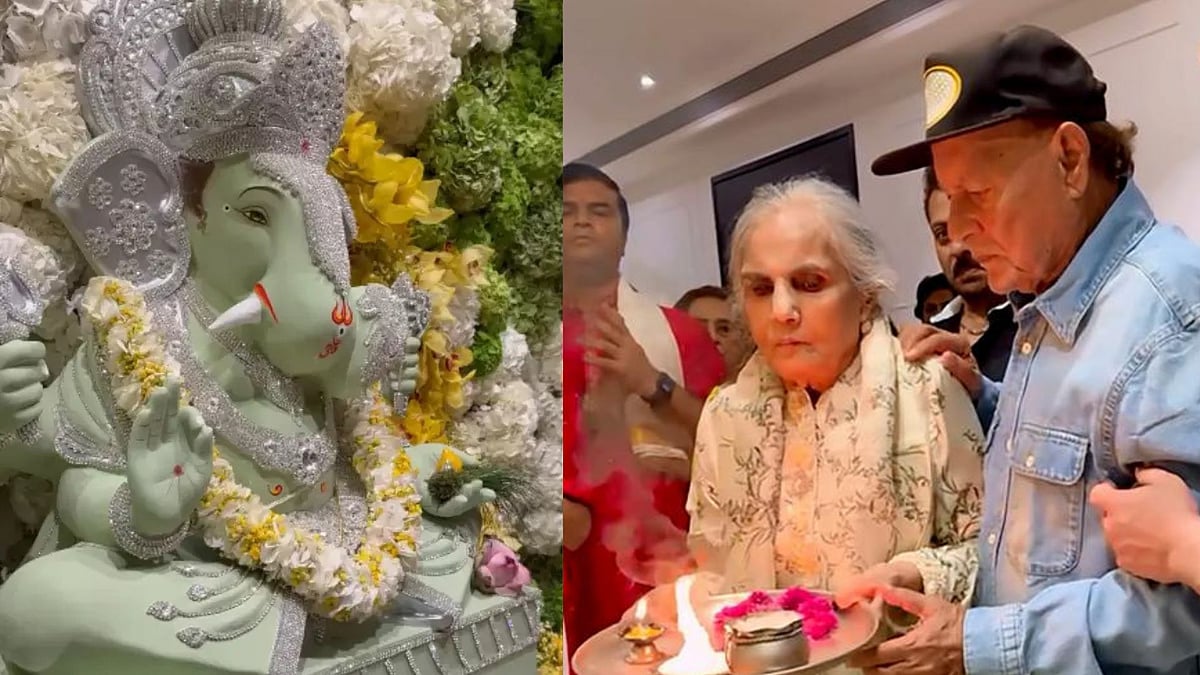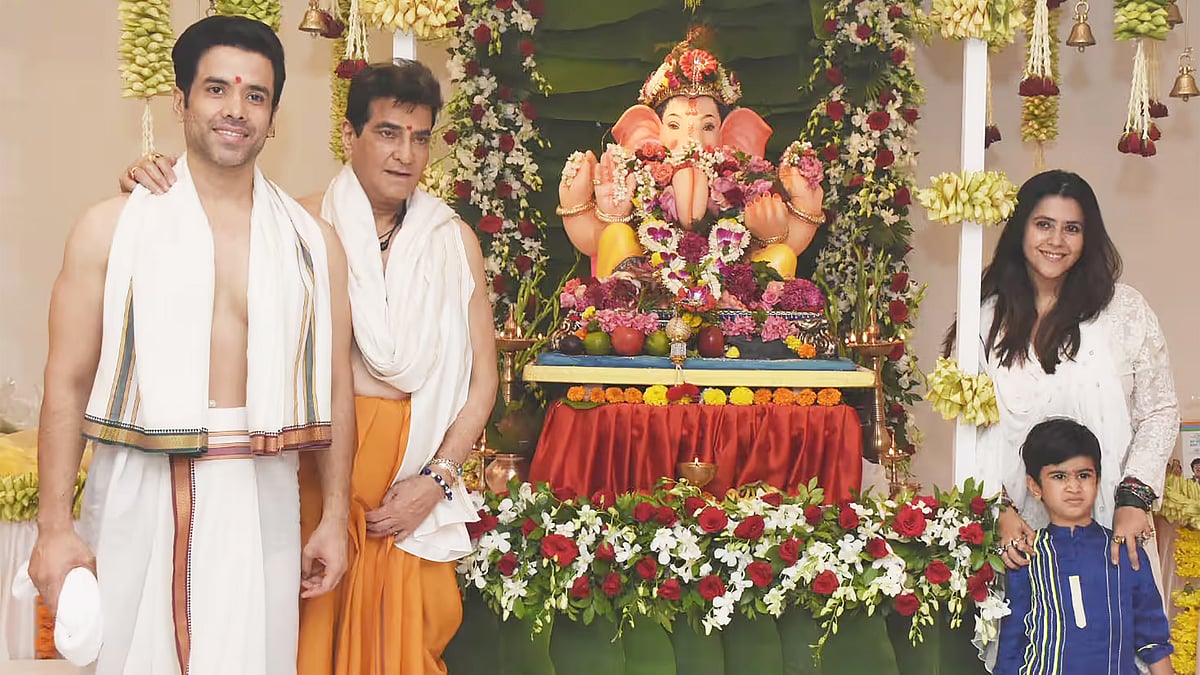Hindi filmwallahs love to co-opt colourful Indian festivals; and the Navratri celebrations of Goddess Amba or Goddess Durga are often depicted cinematically as a backdrop for the victory of feminine agency or benign divine intervention. Taking advantage of traditionally picturesque Navratri festivities, imaginative filmmakers have repeatedly integrated them into both highly charged dramatic sequences and pivotal song-and-dance numbers.
The outpouring of song and dance during Navratri lends itself organically to cinema. The renowned dandiya raas and garba dances of Gujarat have long been showcased effectively by filmmakers from that state. In Govind Saraiya’s black and white Saraswatichandra (1968), Nutan dances the garba while surrounded by strings of festive diyas. ‘Main toh bhool chali babul ka des,’ she professes but her expressions while dancing give the lie to her claim.
In Manmohan Desai’s Suhaag (1979), the villain wants Amitabh Bachchan to shoot cop Shashi Kapoor specifically at Navratri. However, Amitabh and Rekha manage to knock the plan on the head while nimbly doing the dandiya raas to the hit number Naam O Sheronwali. Shantilal Soni’s modestly budgeted bilingual Raksha Bandhan had Sachin and Sarika attempting dandiya to the catchy beats of Poonam ni pyari pyari raat. The number has since become a staple at dandiya events.

Still from Devdas |
The garba has sparkled in Sanjay Leela Bhansali’s triptych of films with a Gujarati milieu. Hum Dil De Chuke Sanam’s (1999) rumbustious garba Dholi taro begins with Aishwarya Rai Bachchan praying amidst earthenware garba pots and a glittering profusion of diyas. In Goliyon Ki Raasleela Ram-Leela (2013), Ranveer Singh is invited to the ‘Navratri ki aarti’ at Deepika Padukone’s mansion where her frenzied dancing to Nagada sang dhol baaje captures the couple’s doomed defiance of their warring families.
And in Dholida from Gangubai Kathiawadi (2022), the lyrics pay obeisance to Maa Amba and other Goddesses. Alia Bhatt imbibes strength from the incantations and sways forcefully, in thrall of the power of the feminine energy.

Perhaps the most memorable recent cinematic incorporation of the famed Durga Puja celebrations in Kolkatta is in the climax of the critically acclaimed 2012 smash, Kahaani. Like the Goddess, the female protagonist (Vidya Balan) fiercely slays the forces of evil. Her killing of the villain on Vijayadashmi day is dramatically heightened by sindoor khela being symbolically daubed on her even as she victoriously melts into the crowd of similar-red-and-white-saree-clad devotees. The analogy with the Goddess was underlined further in director Sujoy Ghosh’s sequel, Kahaani 2, which was pointedly titled Durga Rani Singh.
Bengali directors of old have relied on the emotional significance of Durga Puja to activate the tear glands. In Shakti Samanta’s Rajesh Khanna classic, Amar Prem (1971), a young man (Vinod Mehra) seeks to rescue the woman, who nurtured him in childhood (Sharmila Tagore), from penury by invoking: Aaj Durga Puja hai na, aaj hi ke din Maa Durga apne bhakton ke ghar jaati hai. The film’s closing sequence with a Durga idol being brought home evidenced the blessings of the Mother Goddess on this earthly maternal bond.

Still from Kahaani |
The venerable Satyajit Ray’s 1960 classic Devi opened with a Puja pandal and went on to narrate the story of a young bride (debutante Sharmila Tagore) paying a heavy psychological price for being too closely identified with the Goddess.
Contemporary Bengali directors have concentrated more on showcasing the visual appeal of the festival — Shujit Sircar’s Vicky Donor had Bengali lass Yami Gautam taking her Punjabi boyfriend Ayushman Khurrana for a tour of Durga Puja pandals and in Pradeep Sarkar’s Parineeta Sanjay Dutt performs the traditional Dhunuchi nritya in a pandal.

Still from Hum Dil De Chuke Sanam |
Films set in Bengal like Lootera and Gunday make sure they include at least one sequence during the festival. Never more sumptuously, perhaps, than in Devdas (2002), directed by Sanjay Bhansali each of whose films are located within a definite subculture. In Devdas, wealthy Paro (Aishwarya Rai Bachchan) invites courtesan Chandramukhi (Madhuri Dixit Nene) to her Durga Puja and they both break from tradition by dancing to the chartbuster Dola re.
As always, depictions of Navratri celebrations are most effective cinematically when they are woven into the film’s storyline.

